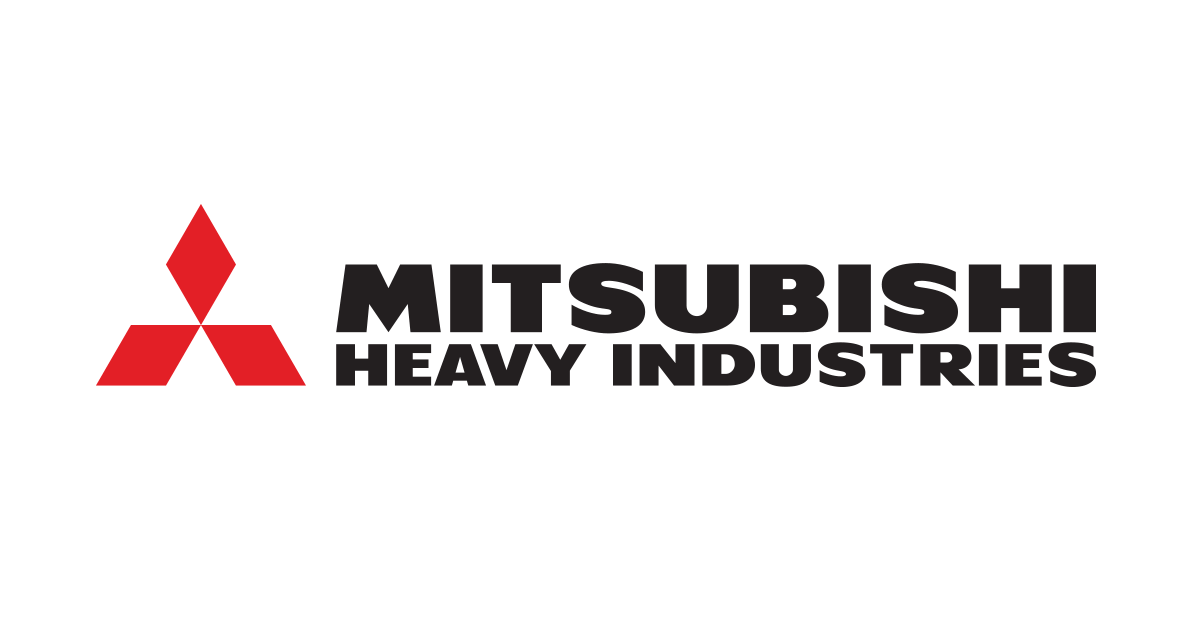Weak market hits fleets’ earnings, but some fight on
Fleets’ earnings for the Q2 2024 show carriers struggle with weak market, while some show resilience.

Carries continue to anticipate ongoing headwinds from the stubborn weak freight market, with some feeling brunt of integrating acquisitions into operations, along with weak demand and inflationary operating costs.
Some bright spots include gains from Covenant, Old Dominion Freight Line, J.B. Hunt, and XPO, with some executives expecting that fundamentals are continuing to improve and can be better in the second half of the year.
Covenant contributes slight bump to structural changes in business model
Amidst a market challenged with general market headwinds, Covenant (CCJ Top 250, No. 43) Chairman and CEO David R. Parker said that it benefitted from its diversified logistics services that was part of structural changes in their business model over the last four years.
The company’s results include year-over-year freight revenue growth of 5.3% and adjusted operating income growth of 15.0%. Parker said the team navigated the down cycle by capitalizing on “new value-added commercial opportunities where available, [and] allocating equipment investments toward more profitable operations and controlling costs.”
The average of tractors were 1.7 years versus 2.2 years last year, and the average age of trailers were 5.7 years versus 6.0 years last year. Paul Bunn, the company’s president said that operating a younger fleet is part of strategic efforts to “reduce the total cost of ownership of our equipment, improve driver satisfaction and maximize our operating flexibility in the midst of a tightening regulatory environment.” As a result, Bunn said they saw a loss of sale of equipment of $0.9 million, compared to a gain of $2.0 million in the prior year quarter.
Revenue: 2024 Q2: $287 million vs. 2023 Q2: $274 million
2024 YTD: $566 million vs. 2023 YTD: $477 million
Income: 2024 Q2: $12.1 million vs. 2023 Q2: $12.2 million
2024 YTD: $16 million vs. 2023 YTD: $28.9 million
-
Forward Air reports loss, but execs optimistic for positive momentum
Forward Air (No. 34) saw a surge in revenue but reported a net loss of $996.5 million from continuing operations, weighed by its integration of Omni Logistics. CEO Shawn Steward said that it is “beginning to see the power of the combination,” but also acknowledged the “integrations of this size, magnitude and complexity do not progress in linear fashion.”
Steward highlighted upward trajectory, noting an increase in Consolidated EBITDA from Q1 to Q2. LTL metrics also showed improvement, with Q2 2024 shipments per day of 13.6k with a 3.4% year-over-year bump, and Q2 2024 weight per shipment of 821 pounds with a 2.5% year-over-year increase.
Revenue: 2024 Q2: $643.6 million vs. 2023 Q2: $333.6 million
2024 YTD: $1.18 billion vs. 2023 YTD: $691 million
Income: 2024 Q2: $(971.3) million vs. 2023 Q2: $19 million
2024 YTD: $(1.60) billion vs. 2023 YTD: $56 million
-
Heartland Express reports net loss
Heartland Express (No. 28) CEO Mike Gerdin noted that the company’s net loss for the quarter reflected the combination of “an extended period of weak freight demand, driven by excess capacity in the industry and ongoing operating cost inflation.”
The company reported an operating ratio of 99.9% in Q2, indicating a more challenging operating environment compared to the previous year when the operating ratio was 94.7%. Gerdin added that they’re looking at internal efforts at Smith Transport and Contract Freighters, the company’s recent acquisitions in 2022, to improve operating results.
The company also isn’t upgrading its fleet as quickly, with average tractor and trailer age went from 2.1 years on June 30, 2023, to 2.6 years on June 30, 2024. Average trailer age rose from 6.1 years to 6.9 years during the same period.
Revenue: 2024 Q2: $274.7 million vs. 2023 Q2: $306 million
2024 YTD: $545 million vs. 2023 YTD: $637 million
Income: 2024 Q2: $(3.4) million vs. 2023 Q2: $7.7 million
2024 YTD: $(18.5) million vs. 2023 YTD: $20 million
-
JB Hunt sees bright spot in final mile service segment
J.B Hunt (No.3) reported a decrease on its revenue and operating income, with executives citing a weak freight market. Its intermodal, truckload and dedicated contract service saw declines, while its Integrated Capacity Solutions saw a steep drop of 25%. Its final mile service showed reliance, with an increase of 5% and $235 million revenue, driven by new contracts.
Execs are optimistic for a better second half of the year, with Spencer Frazier, EVP of sales and marketing stating on a call, “April started a little slower from a demand perspective, primarily due to the timing of Easter. But we did experience what used to be a typical end of the month and end of quarter lift in June."
Revenue: 2024 Q2: $2.9 billion vs. 2023 Q2: $3.1 billion
2024 YTD: $5.87 billion vs. 2023 YTD: $6.36 billion
Income: 2024 Q2: $205.7 million vs. 2023 Q2: $270.7 million
2024 YTD: $400 million vs. 2023 YTD: $548 million
-
Landstar ends two-year streak of declining revenue
Landstar (No.7) saw its first sequential quarter-to-quarter revenue increase at 5%, following seven quarters of sequential revenue declines. To build on this momentum, President and CEO Frank Lonegro said they continue to invest in leading technology and new trailing equipment.
From 10,548 in July 2023 to 9,180 in June 2024, the carrier’s owner-operator headcount dipped at 12.97%, with Lonegro noting attributing it to significant increase in repair costs and extended out-of-service periods awaiting repairs. “We would expect the count to continue to decline in the coming months, given the challenging operating environment faced by many truck owner operators, but at a slower pace.”
Revenue: 2024 Q2: $1.22 billion vs. 2023 Q2: $1.37 billion
2024 YTD: $2.39 billion vs. 2023 YTD: $2.8 billion
Income: 2024 Q2: $68 million vs. 2023 Q2: $87.9 million
2024 YTD: $128 million vs. 2023 YTD: $1289 million
-
Marten Transport continues to hold the line
Marten Transport (No.37) continues to feel the impact of the weak environment, with Executive Chairman Randolph L. Marten stating that earnings were “heavily pressured by the freight market recession’s oversupply and weak demand, inflationary operating costs, and cumulative impact of freight rate reductions leading to freight network disruptions.”
The company has refused to take rate cuts since August 2023.Its total operating revenue of $246.2 million dipped to 13.8%. Operating ratio net of fuel was at 94.8%. Last year, the carrier brought in 390 tractors. The average of tractors were 1.8 years versus 1.7 years last year, and the average age of trailers were 5.0 years versus 4.2 years last year.
Revenue: 2024 Q2: $246 million vs. 2023 Q2: $285.6 million
2024 YTD: $495.9 million vs. 2023 YTD: 583 million
Income: 2024 Q2: $7.88 million vs. 2023 Q2: $21 million
2024 YTD: $17 million vs. 2023 YTD: $44 million
-
Old Dominion Freight Line gains 6.1% increase to $1.5 billion
Old Dominion Freight Line (No.9) achieved its third straight quarter of year-over-year revenue growth, with a 6.1% increase from $1.41 billion to $1.5 billion. The carrier’s LTL services saw revenue growth of 6.2% during the same time last year, with LTL shipments per day increased 3.1%, and revenue per shipment grew 3.2%. Operating ratio also improved to 71.9% from 72.3% in the same period last year.
President Marty Freeman credited the company’s long-term yield management strategy to offset cost inflation while supporting investment in capacity and technology, with plans to invest $350 million in real estate this year.
Revenue: 2024 Q2: 1.498 billion vs. 2023 Q2: $1.4 billion
2024 YTD: $2.95 billion vs. 2023 YTD: $2.85 billion
Income: 2024 Q2: $322 million vs. 2023 Q2: $292 million
2024 YTD: $614 million vs. 2023 YTD: $577 million
-
P.A.M Transportation Services reports net loss of $2.9 million
P.A.M. Transportation Services (No. 59) results are notably weaker than the same quarter last year. It reported a net loss of $2.9 million, with operating decreased by 11.8% to $182.9 million, missing its estimate of $186.7 million. Operating ratio also increased to 103.7% in Q2 from 92.7% in the same period last year, indicating that operating expenses exceeded revenues.
Joe Vitiritto, President of the company, noted that the quarter “started slower than anticipated but began to show signs of seasonal demand patterns that were most consistent with pre-COVID periods, and we saw capacity tightening some more as we moved towards the end of the quarter.”
Revenue: 2024 Q2: $182.9 million vs. 2023 Q2: $207 million
2024 YTD: $365.5 million vs. 2023 YTD: $429 million
Income: 2024 Q2: $(2.9) million vs. 2023 Q2: $9.3 million
2024 YTD: $(2.6) million vs. 2023 YTD: $14.5 million
-
Schneider National shows progress, despite year-over-year declines
Schneider National (No.8) attributed the weak freight environment and overcapacity for its poor results. Operating ratio was higher at 96.1%, compared to the same period last year at 92.3%. On a brighter note, its truckload, intermodal and logistics segments showed improvement compared to Q1.
Mark Rourke, president and chief executive officer at Schneider, stated, “The second quarter showed continued progress toward market equilibrium as evidenced by moderate seasonality and a tightening spot market.”
Revenue: 2024 Q2: $1.31 million vs. 2023 Q2: $1.34 million
2024 YTD: $2.6 million vs. 2023 YTD: $2.77 million
Income: 2024 Q2: $35 million vs. 2023 Q2: $77.5 million
2024 YTD: $53.8 million vs. 2023 YTD: $175.5 million
-
Saia takes in retail gains
Saia (No. 19) saw an 18.5% increase in revenue at $823.2 million, and a 14.4% increase in operating income at $137.6 million. Its LTL shipments increased 18.1% year-on-year in Q2 to $2.327 million from $1.97 million a year ago.
During the quarter, the carrier opened six new terminals and relocated two others, resulting to investments in employee hiring, training and other costs that may affected results, said Saia President and CEO, Fritz Holzgrefe. He also pointed out disruptions in the LTL market resulted in share gains, including new markets that they don’t usually participate in, such as “more retail in nature and tends to be lighter weighted.”
Revenue: 2024 Q2: $823 million vs. 2023 Q2: $694.6 million
2024 YTD: $1.57 billion vs. 2023 YTD: $1.3 billion
Income: 2024 Q2: $102.5 million vs. 2023 Q2: $91 million
2024 YTD: $193 million vs. 2023 YTD: $167 million
-
UPS increases volume in US
UPS (No.2) saw a 1.1% decrease of $21.8 billion, compared to $22 million last year. Carol Tomé, UPS CEO, said that the quarter is a turning point, as its volume in the US increased for the first time since 2022. “As expected, our operating profit declined in the first half of 2024 from what we reported last year. Going forward we expect to return to operating profit growth.”
“Accordingly, we are adjusting our full-year operating margin guidance to reflect the nature of the volume flowing through our U.S. network,” she said. It also aims to close its acquisition of Mexico-headquartered express delivery company Estafa.
Revenue: 2024 Q2: $21.8 million vs. 2023 Q2: $22 million
2024 YTD: $43.5 million vs. 2023 YTD: $44.9 million
Income: 2024 Q2: $1.4 million vs. 2023 Q2: $2 million
2024 YTD: $2.5 million vs. 2023 YTD: $3.97 million
-
Werner focusing on “controllable” elements
Werner (No.13) saw its revenue decline at 6% at $760.8 million. Derek Leathers, Chairman and CEO, said that the company made progress sequentially by making changes to reduce operating costs and advance their technology strategy.
Leathers added, “One-Way Truckload production increased for the fifth consecutive quarter. Mexico and cross-border related business is growing double-digits. Dedicated revenue per truck was up, and Logistics segment returned to positive operating income."
Revenue: 2024 Q2: $760.7 million vs. 2023 Q2: $811 million
2024 YTD: $1.5 billion vs. 2023 YTD: $1.6 billion
Income: 2024 Q2: $20.9 million vs. 2023 Q2: $45 million
2024 YTD: $41.8 million vs. 2023 YTD: $96 million
-
XPO’s profits boosts as LTL shipments jumps
XPO (No.8) generated $2.08 billion, compared with $1.92 in the same period. The report noted that its year-over-year increase in revenue was due to primarily higher yield and tonnage per day in the North American LTL segment, which generated a 12% increase in revenue at $1.27 billion.
Mario Harik, CEO, said, “We reported a strong second quarter of earnings growth, underpinned by a year-over-year increase in revenue of 9%. Companywide, we grew adjusted EBITDA by 41% and adjusted diluted EPS by 58%.
Revenue: 2024 Q2: $2.08 million vs. 2023 Q2: $1.9 million
2024 YTD: $4 million vs. 2023 YTD: $3.8 million
Income: 2024 Q2: $150 million vs. 2023 Q2: $31 million
2024 YTD: vs. $217 million 2023 YTD: $47 million

 machineryasia
machineryasia 





